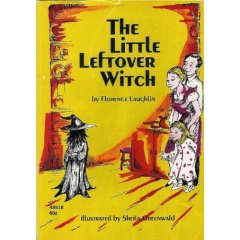Moon Cakes
 'Moon cakes' are a traditional Chinese recipe made to celebrate the Chinese Moon Festival or Mid-Autumn Festival. The Moon Festival celebrates the brightest full or harvest moon of the year. This year's Moon Festival, or Mid-Autumn Festival, falls on October 6, 2006 (the 15th day of the 8th lunar month).
'Moon cakes' are a traditional Chinese recipe made to celebrate the Chinese Moon Festival or Mid-Autumn Festival. The Moon Festival celebrates the brightest full or harvest moon of the year. This year's Moon Festival, or Mid-Autumn Festival, falls on October 6, 2006 (the 15th day of the 8th lunar month).Hou Yi, the builder
Hou Yi, a famous builder who built a beautiful jade palace for the Goddess of the Western Heaven (also called the Royal Mother). In appreciation, she gave Yi a special pill that contained the magic elixir of immortality. But with it, came the condition and warning that he may not use the pill until he had accomplished certain self-purification.
His wife, Chang'e, was a beautiful but inquisitive woman. One day, she discovered the pill, and without telling her husband, swallowed it. The Goddess was very angry, and as a punishment, banished Chang'e to the moon where, according to the legend, she can be seen at her most beautiful, on the night of the bright harvest moon.
The Hare - Jade Rabbit
According to tradition, the Jade Rabbit pounds medicine, together with the lady, Chang'e, for the gods. Others say that the Jade Rabbit is a shape, assumed by Chang'e herself. You may find that the dark areas to the top of the full moon may be construed as the figure of a rabbit. The animal's ears point to the upper right, while at the left are two large circular areas, representing its head and body. [4]
In this legend, three fairy sages transformed themselves into pitiful old men, and begged for food from a fox, a monkey, and a hare. The fox and the monkey both had food to give to the old men, but the hare, empty-handed, jumped into a blazing fire to offer his own flesh instead. The sages were very thankful for the meat and ate it but the sages were so touched by the hare's sacrifice and act of kindness that they let him live in the Moon Palace, where he became the "Jade Rabbit".
Overthrow of Mongol rule
The Mid-Autumn Festival also commemorates an uprising in China against the Mongol rulers of the Yuan Dynasty (1280–1368) in the early 14th century. As group gatherings were banned, it was impossible to make plans for a rebellion. Noting that the Mongols did not eat mooncakes, Liu Bowen (劉伯溫) of Zhejiang Province, advisor to a Chinese rebel leader Zhu Yuanzhang, came up with the idea of timing the rebellion to coincide with the Mid-Autumn Festival. He sought permission to distribute thousands of moon cakes to the Chinese residents in the city to bless the longevity of the Mongol emperor. Inside each cake, however, was inserted a piece of paper with the message: "Rise against the Tatars on the 15th day of the Eighth Moon" (八月十五殺韃子). On the night of the Moon Festival, the rebels successfully attacked and overthrew the government. What followed was the establishment of the Ming Dynasty (1368-1644), under the rebel leader Zhu Yuanzhang. Henceforth, the Mid-Autumn Festival was celebrated with moon cakes on a national level.
More elaborate versions of mooncakes contain four egg yolks (representing the four phases of the moon). Besides lotus seed paste, other traditional fillings include red bean paste and black bean paste.
Roughly the size of a human palm, these mooncakes are quite filling, meant to be cut diagonally in quarters and passed around.






















